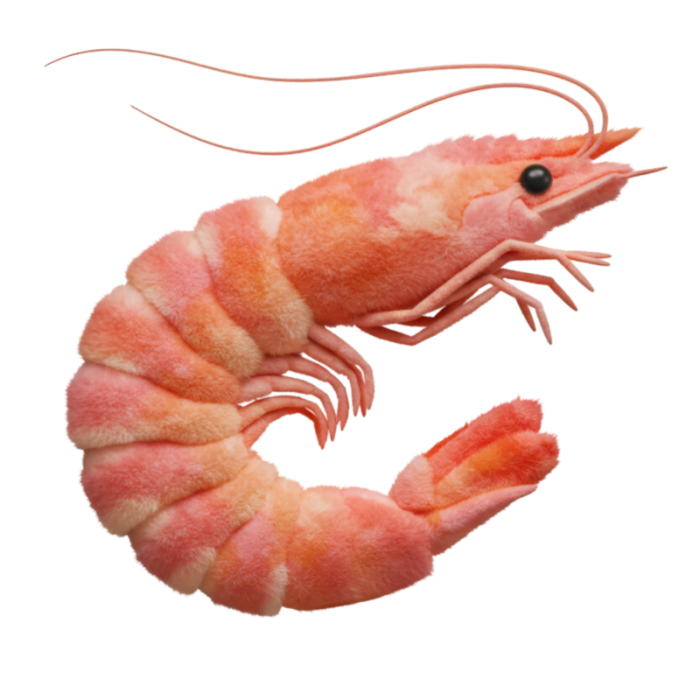Shrimp
Description
Shrimp is a small, free-swimming crustacean with a long, muscular abdomen, long antennae, and 10 legs, often harvested for food. It is a popular type of seafood that lives in both salt and freshwater environments and is valued for its sweet, firm texture and versatility in cooking. The terms "shrimp" and "prawn" are often used interchangeably, though they are technically different suborders of decapod crustaceans.
What shrimp is
A crustacean: Like crabs and lobsters, shrimp are decapod crustaceans, meaning they have a hard exoskeleton made of chitin and 10 legs.
A swimmer: Shrimp have well-developed swimmerets (pleopods) that are adapted for swimming, giving them a slender body with a long, muscular abdomen.
A food source: It is a popular and globally consumed seafood known for its slightly sweet, briny, and tender taste.
A versatile ingredient: Shrimp can be cooked in many ways, including poached, fried, grilled, or used in soups, salads, and pasta dishes.
Shrimp vs. prawn
Scientific classification: Shrimp belong to the suborder Pleocyemata, while prawns belong to the suborder Dendrobranchiata.
Physical differences: Shrimp tend to have a distinct bend in their body, with their second abdominal segment overlapping the first and third. Prawns have a straighter body and their abdominal segments overlap in a stacked pattern.
Claw differences: Shrimp typically have larger pincers on only one pair of legs, whereas prawns have larger pincers on three pairs of legs.
Interchangeable terms: Despite these differences, the names are often used interchangeably in commercial and culinary contexts.
Other information
Habitat: Shrimp are found in both salt and freshwater environments around the world.
Size: They vary in size from just a few centimeters to "jumbo" varieties that can be several inches long.
Nutrition: Shrimp are a good source of nutrients, including iodine and omega-3 fatty acids.
Type
Fish

